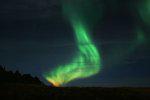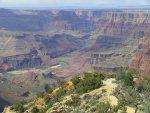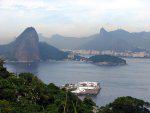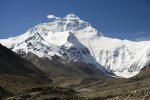 Aurora Borealis
Aurora Borealis
Our Planet is unique amongst others in our Solar System, and on it, Mother Nature has really made her mark. There is beauty all around us, no matter where we happen to be in the world, but there are definitely some places that are simply breathtaking. So please enjoy the beauty and wonder of The Seven Natural Wonders Of The World:
Aurora Borealis Also commonly known as the Northern Lights, Aurora Borealis are spectacular displays in the skies which are created by natural light produced at the Earth's poles. Although the Southern Lights do exist, their displays are far less mesmerising than those of the Northern Lights. They are most commonly seen between the months of March and April, and September and October, in places that are relatively close to the North Pole.

The Grand Canyon is an enormous gorge created by the Colorado River, that runs through the state of Arizona in the south-west of the United States. Although not the highest, or even the longest canyon in the world, the spectacle and beauty of the Grand Canyon makes it one of nature's finest creations. Measuring 277 miles long and up to 18 miles across at points, it attracts more than 5 million visitors every year.

The Great Barrier Reef is the largest living formation in the world, and includes over 900 islands and more than 2,900 separate coral reefs, which together support one of the most diverse eco-systems found anywhere on Earth. Located just off the east coast of Australia, the Great Barrier Reef is larger than the Great Wall Of China and is the only living thing on the planet that is visible from space. It stretches more than 1,500 miles in length.

Guanabara Bay (also known simply as the Rio de Janeiro Harbour), is an oceanic bay in south-western Brazil that despite it's name, actually has seven different cities dotted along it's shores. Guanabara Bay is the largest bay in the world based on water volume and has more than 130 islands throughout it. The bay is surrounded by unique mountains including the famous Sugar Loaf Mountain, and the higher Corcovado, who's peak is home to the famous Christ the Redeemer monument.

Found in the Himalayan Mountains on the border between Nepal and Tibet, Mount Everest stands as the world's highest mountain with it's summit peaking at 8,848 meters (29,029 feet). Since the first climb to the summit of Edmund Hillary and Tenzing Norgay in 1953, more than 4,000 ascents have been made by nearly 3,000 different people. Mount Everest was named as such in 1865 but was known by locals as Mount Chomolungma and more recently as Sagarmatha due to it's location.

Paricutin is a cinder cone volcano that is actually the most recent volcano to be formed in the western hemisphere. The last eruption of Paricutin took place between 1943 and 1952, when nearly 1,000 people died in one 1949 eruption, with the volcanic ash falling as far as Mexico City 200 miles away. Paracutin is said to have grown out of a cornfield, affecting livestock, homes and crops and now stands at 9,210 feet above sea level.

The Victoria Falls is the world's largest waterfall based on the amount of water falling over the edge at once (including both it's height and width). It is found on the border of Zambia and Zimbabwe in southern Africa, and is protected by National Parks in both countries. Locally, the Victoria Falls is known as Mosi-oa-Tunya which means "smoke that thunders", and it is served by only one water source which is the Zambezi River.

